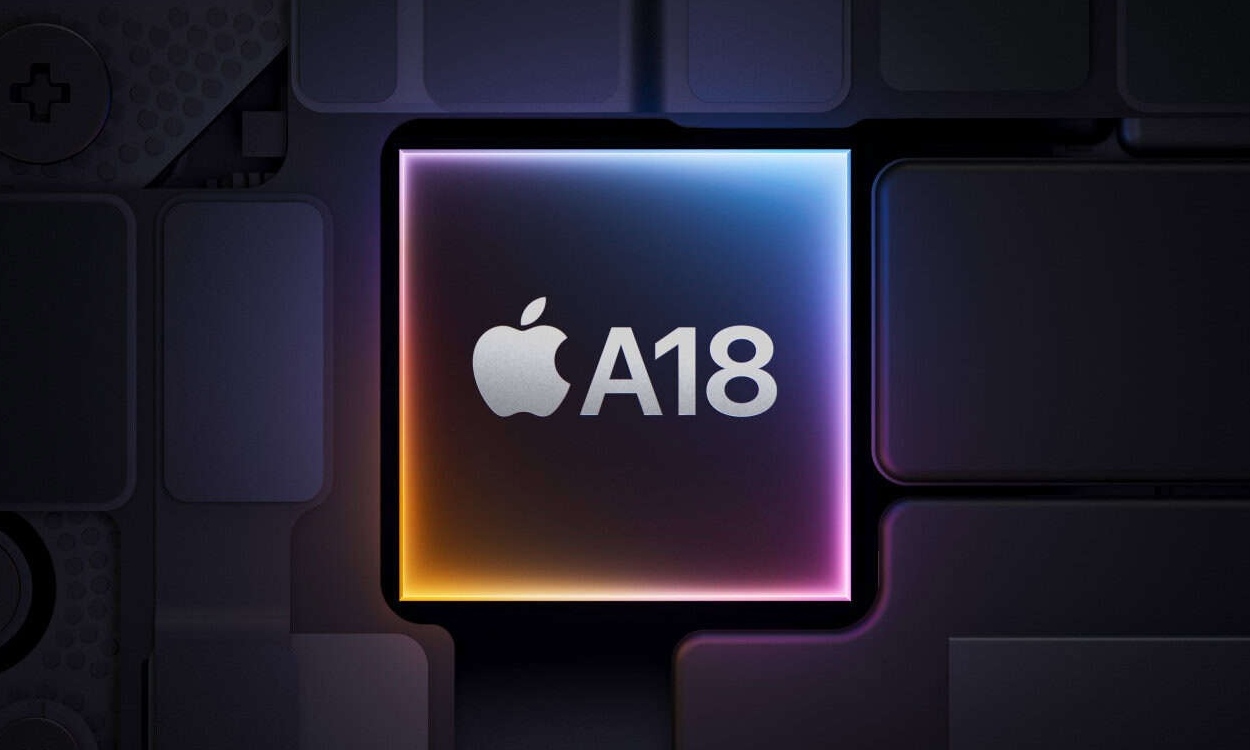Apple’s latest iPhone 16 and 16 Plus models feature the latest A18 chipset, which looks like a binned-down version of the more powerful, A18 Pro. We have already benchmarked the A18 Pro chipset, so in this post, we have run various benchmark tests on the Apple A18, including Geekbench, 3DMark, AnTuTu, and more. On that note, let’s go ahead and check out the performance difference.
Apple A18 Specifications
| A18 | |
|---|---|
| CPU | Six-core CPU (2+4) |
| CPU Cores | 2x 4.05GHz Performance cores 4x 2.42GHz Efficiency cores |
| Process Technology | TSMC’s 3nm process (N3E) |
| GPU | Apple 5-core GPU Hardware-accelerated Ray Tracing |
| Memory Support | LPDDR5X, up to 7500 MT/s |
| Machine Learning and AI | 16-core Neural Engine; 35 TOPS |
| Modem | Snapdragon X75 5G modem Up to 10 Gbps Peak Download Up to 3.5 Gbps Peak Upload |
| Connectivity | Wi-Fi 7, Bluetooth 5.3 |
Apple A18: Geekbench 6 CPU
In our first Geekbench 6 CPU test, the iPhone 16 featuring the A18 chipset achieves a single-core score of 3,141 points and a multi-core score of 7,804 points. Since A18 has half the cache of A18 Pro, it scores slightly less despite having the same CPU cores and frequency. Nevertheless, the CPU performance and efficiency of A18 is unrivaled and the score is higher than last year’s A17 Pro.
Apple A18: AnTuTu Benchmark
In the next test, the A18 on the iPhone 16 scored 1,668,567 points in the AnTuTu benchmark. It gets a CPU score of 409,372 points and 675,209 points in the GPU department. The Apple A18 features a 5-core GPU whereas the A18 Pro has one extra GPU core so the difference is slightly on the higher side in graphics performance.
| A18 AnTuTu Score | 1,668,567 |
|---|---|
| CPU | 409,372 |
| GPU | 675,209 |
| Memory | 224,979 |
| UX | 359,007 |
Related Articles
Apple A18 vs A18 Pro: What’s the Difference?
Sep 10, 2024
Apple A18 Pro vs Snapdragon 8 Gen 4: Can Qualcomm Beat Apple?
Sep 11, 2024
Apple A18: Geekbench 6 GPU
In the Geekbench 6 GPU test, the A18 chipset achieves 28,030 points running on Apple’s Metal API. This puts the A18’s 5-core GPU on par with the A17 Pro GPU from last year. I would say the graphics performance on the Apple A18 is pretty solid. Not to mention, it also supports hardware-accelerated Ray Tracing.
Apple A18: 3DMark Wild Life Extreme Stress Test and Solar Bay
In the graphically-intensive 3DMark Wild Life Extreme Stress test, the 5-core GPU on A18 gets the best loop score of 3,600 points and the lowest loop score of 2,370 points. The stability remained at a respectable 65.8%.
Next, in the Solar Bay Unlimited test that checks the ray tracing capability, it got an overall score of 7,068 points with an average frame rate of 26.9 FPS. Since the test was done on the smaller iPhone 16 model, heat generation might be throttling the GPU from sustaining peak performance.
Related Articles
Apple A18 Pro vs Snapdragon 8 Gen 3: iPhone Takes the Lead Again
Sep 11, 2024
Apple A18 Pro vs A17 Pro: Apple Delivers Meaningful Upgrades
Sep 10, 2024
A18: Geekbench AI
In our final Geekbench AI test, the 16-core Neural Engine on A18 delivers a mighty performance. It scored 4,231 in Single Precision (FP32), 32,518 in Half Precision (FP16), and a whopping 44,953 in Quantized (INT8). The scores are in line with A18 Pro’s Neural Engine performance. Simply put, as far as AI performance is concerned, both A18 and A18 Pro are on par with each other.
A18 Benchmarked: The Verdict
To conclude, the Apple A18 chipset may not have the ‘Pro’ label, but it’s a flagship chipset. Basically, the standard iPhone 16 and 16 Plus models get a flagship-level SoC this year. The CPU performance is roughly the same as the Apple A18 Pro and the GPU is marginally behind due to the absence of an additional core.
Apple A18 performs better than last year’s flagship chipset, the Apple A17 Pro. Simply put, the A18 chipset is both powerful and efficient, and you can expect great battery life on the iPhone 16 and 16 Plus.
Source link
